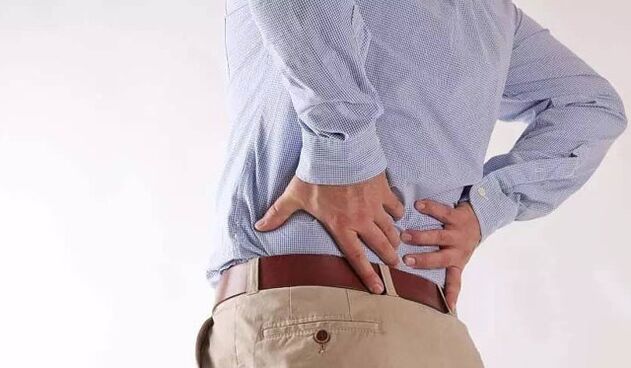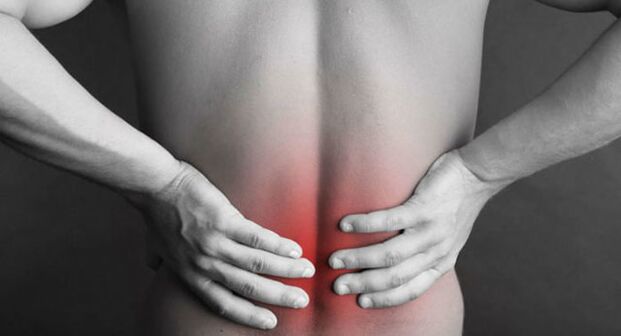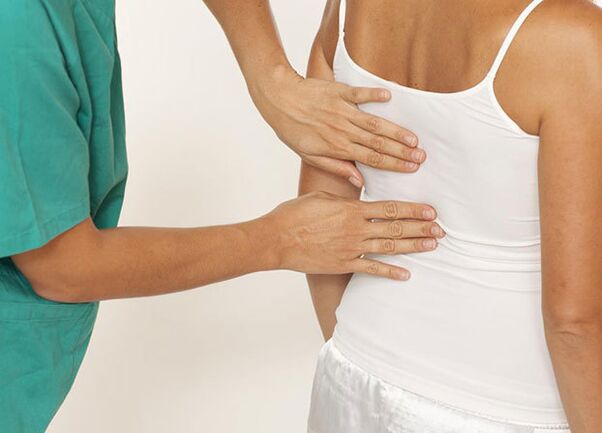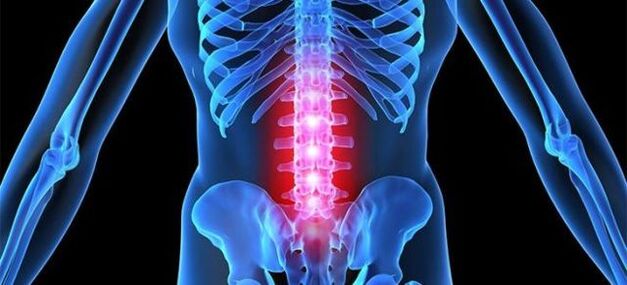About 80% of people over 55 years of age experience manifestations of various back diseases, they should not neglect the faces of younger age categories. So, one of the most common diseases of the spinal-osteochondrosis of the spinal-lumbar-spine-is also found in patients of 25-45 years. Even young people aged 16-25 are increasingly suffering from the symptoms and causes of this extremely unpleasant disease. The question becomes logical whether it is possible to stop the tendency of the number of patients in general, and what to do for each person for preventive purposes in order not to become a victim of this pathology?

Symptoms
With insufficient attention to this disease, premature diagnosis, its treatment is difficult in that disease or secondary complications. As a natural continuation of pathology, osteochondrosis begins to progress. Its treatment is not always effective, and when tightened or a incorrectly described therapeutic course, a disability risk occurs. Another characteristic problem is the appearance of intervertebral hernias, which is associated with unbearable painful sensations. Every day, the chances of getting rid of hernia are getting less and less.
Characteristic clinical symptoms help recognize the disease in the early stages and avoid these sad consequences:
An independent assessment of these symptoms may not be accurate, as most of them have a similarity to the signs of other diseases in the back or joints. Therefore, only a rheumatologist or orthopedic has a competence to talk about the presence of the development of osteochondrosis of the lumbar region.
ClaSSIFICaTION
Differential diagnosis to accurately determine the disease, to distinguish it from identical pathologies and to determine the course of treatment, the classification of the stages of this disease helps:
Diagnostic methods
Since both the ideal recognition of the clinic and the classification of lumbar spine osteochondrosis does not give a complete idea of the pathological processes provoked by it, a physician who is engaged in the treatment of pathological processes in the spine, diseases of the muscle system or orthopedist should be prescribed:

At the same time, the patient takes tests for a rheumatoid test, general blood indicators, content of biochemical ingredients. The overall survey results allow you to accurately establish the diagnosis and identify the development phase of the lumbar region osteochondrosis.
Symptoms and treatment of lumbar spine osteochondrosis
Among the common causes of pain in the back of the back, lumbar spinal osteochondrosis, symptoms, the treatment of which have their characteristic features. The disease is the initial stage of osteochondrosis associated with the process of destruction of the cartilage ring, intervertebral discs, a change in their height towards decrease, swelling formation and nerve root clamps. Young people and the elderly can cope with the disease, regardless of gender, social status and religion. A long lack of manifestation of the symptoms of the disease leads to the loss of precious time and the transition from a stage of the disease to more severe forms of its development. The main distinguishing characteristic of osteochondrosis is the boundary area of dystrophic changes in vertebra tissue, which does not go beyond the articular cartilage.
Causes of the initial phase of osteochondrosis
A number of external and internal factors determine the development of the pathological state of the lumbar region of the axial skeleton. Lumbar osteochondrosis occurs due to certain risk factors. These include:
The frequency of diagnosing osteochondrosis of the lumbar skeleton is determined by the number of risk factors for its development that are present in the patient's life.
Diagnosis of the disease
Determination of the degenerative-district lesion of one of the five beads of the lumbar space of the axial skeleton provides diagnostic measures. They are prescribed by a doctor. In consultation with a specialist who knows how to treat lumbar osteochondrosis, a history of the disease is gathered, the time and features of sign manifestation are being clarified, the intensity and place of localization of painful sensations are being clarified. The condition of the muscle fibers in the damage area is determined by the visual examination. Using the palpation method offers an opportunity for a physician to see a picture of the symmetry of the vertebrae and the distance between them. The final diagnosis is determined after obtaining the results of additional studies. These include:

Purposes and methods of treatment of pathology
The results of the diagnostic measures are the basis for the treatment regimen for osteochondrosis of the lumbar lumbar skeleton, which follows certain objectives. These include:
Lumbar spine chondo therapy, whose symptoms and treatment have its own characteristics, consists of taking and using pharmaceuticals, traditional medicine recipes, non -conventional treatment methods, including hirudotherapy. An effective addition to solving the pathology problem is physiotherapeutic, water, massage procedures, gymnastics and sports, including special exercise exercises. Medication therapy includes the use of non -inflammatory non -steroidal medicines, muscle relaxants, chondroprotectors, vitamin complexes with trace and mineral elements.
With very severe pain, novocaine or lidocaine blockades are prescribed, performed by introducing injections into the affected vertebrae sites. For local use, ointments, gel, lotions, patch with a heating effect, anti -inflammatory are prescribed. Physiotherapeutic treatment includes the passage of electrophoresis healing courses, diadean currents, exposure to ultravioletus, manual, stroke waves and reflexological procedures. In the absence of positive dynamics, the appearance of hernial extensions occurs, a surgical operation is described. To avoid developing complications with the appearance of the first symptoms, treatment should begin immediately.
Lumbar osteochondrosis
Lumbar osteochondrosis is one of the most common forms of underlying disease, in fact osteochondrosis. Lumbar osteochondrosis, whose symptoms are evenly determined by men and women, manifested in the form of pain concentrated in the sacrum area, reflected in their symptoms and in the lower extremities, which is often defined by patients as "lumbar nerve pinching".
Extension for lumbar osteochondrosis
The protests in this area of interest to us develop more often, moreover, are the extensions that cause the pain in the lower back. The middle region itself, given its location and features, is mostly subject to the emergence of certain functional problems. This means, when considering this statement on the one hand, it can be distinguished that our gravity center directly refers to the Middle Department, namely, it is precisely that an important part of the Loads accounts. When considering, on the other hand, it can be noted that a considerable amplitude of movements again falls into this lumbar region. Given this, the greatest tendency to damage (as well as extensions of interest to us) is in discs concentrated in the lumbar region. In addition, we must not forget that changes in discs in this and, of course, in other areas, occur, including in the background of age -related degenerative processes.
Remind our readers what extensions themselves are. Connecting the discs to each other on the back is provided by the cartilage -based wheels. The main components of the intervertebral disc are a lifestyle and a fibrous ring, through which the fixation is provided within the spinal cord frame. The impact of certain factors and conditions provokes the possibility of breaking this ring, in the background of which, on the other hand, the prolongation of the nucleus occurs. As a result of this process, hernia develops. In terms of extension, it is already developing as a result of a similar course of process, but without the simultaneous rupture of the ring - in this case it is simply subject to thinning, and not a break, because the essence lasts directly through the ring. Indeed, this extension is defined as extension.
As for the symptoms of extension, it manifests as follows:

Mostly, conservative treatment is applied to the lumbar disc extension. Meanwhile, significant in the development of extension are often associated with severe, resistant treatment symptoms, in this case, you can no longer do without surgical intervention.
Treatment
Mostly the treatment of osteochondrosis is multicomponent and quite complicated in its implementation. Mostly all measures of therapy are reduced to the following points:
Determining the disease requires, first of all, compliance with bed rest for patients. The main recommendation for this part is a difficult/difficult sleeping place. Extremely expressed in manifestations, attacks predict the need for a minimal motor load and in an early contact for the respective specialist.






















